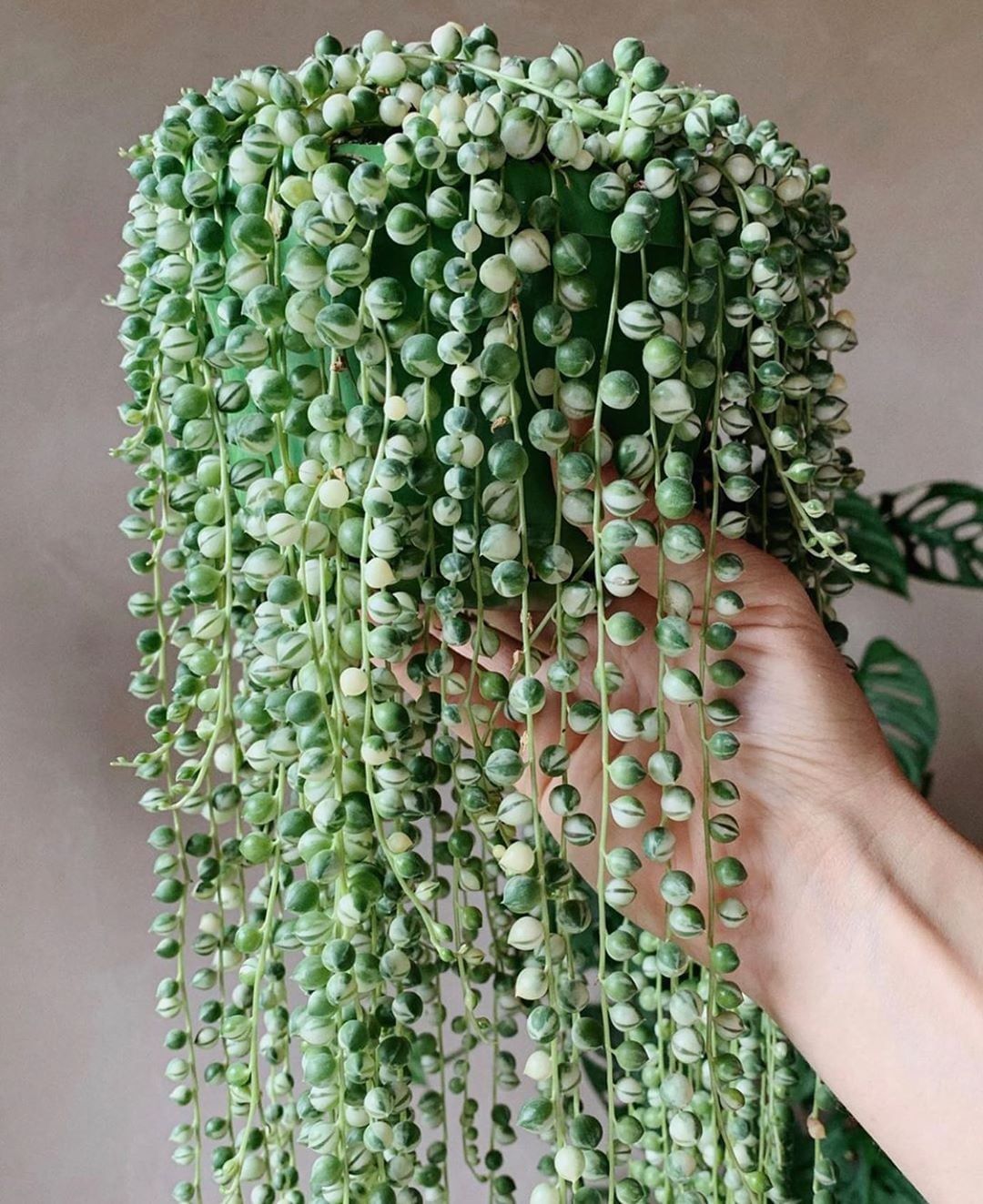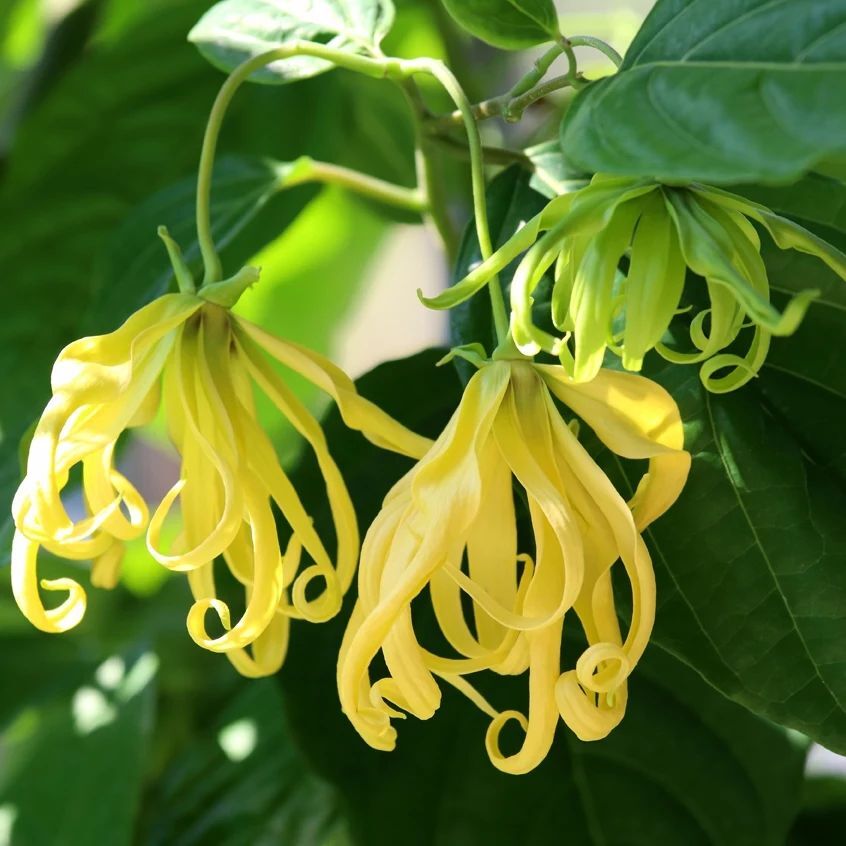Find How to Grow Watermelon from Seeds (Step-By-Step Guide) with expert tips and enjoy juicy, sweet, nutritious homegrown fruits.
Discover How to Grow Watermelon from Seeds (Step-By-Step Guide) in the easiest way. Enjoy the process of growing your own juicy fruits, from planting the seeds to harvesting the fruits.
Read about Apple Tree Care in Containers
When to Plant Watermelon Seeds
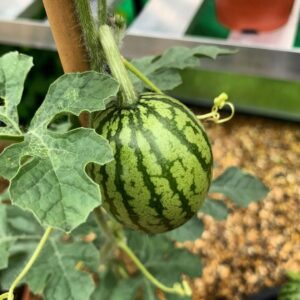
The best season to grow watermelon from seeds depends on the climate you’re in. Watermelons love warm weather and require a long, hot growing season to thrive. However, there are some differences between growing watermelons in hot and cold climates.
In hot climates:
If you live in a hot climate, such as the southern parts of the United States, you have a longer growing season, which is great for watermelons. The best time to start planting watermelon seeds is in the late spring or early summer when the soil temperature has reached at least 70°F (21°C). This temperature is ideal for the seeds to germinate and the plants to establish themselves.
In cold climates:
If you live in a colder climate, such as the northern parts of the United States, you have a shorter growing season and need to take some extra steps to ensure your watermelon plants have enough time to mature. The best approach is to start the seeds indoors about 4-6 weeks before the last expected frost date in your area.
- Plant the watermelon seeds in biodegradable pots or seed trays filled with a quality seed starting mix.
- Place them near a sunny window or under grow lights to provide adequate light for germination and growth.
- Provide warmth and light: Place the pots or trays in a warm location, around 75-85°F (24-29°C). If needed, use a seedling heat mat to maintain the desired temperature.
- Keep the soil consistently moist but not waterlogged.
Once the danger of frost has passed and the soil has warmed up, you can transplant the young watermelon seedlings into your garden. Choose a sunny location with well-drained soil.
In Moderate Climates:
In USDA Zones 7-9, which include regions with moderate climates, watermelon seeds can be directly sown outdoors. After the last expected frost date has passed and the soil temperature reaches 70°F (21°C) or higher, plant the seeds in well-drained soil enriched with organic matter.
Read about Muskmelon vs. Cantaloupe: Differences and Similarities
Best Watermelon Varieties to Grow From Seeds
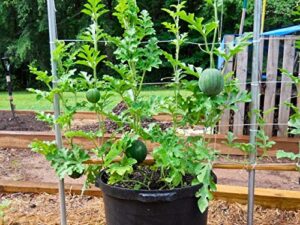
1. Crimson Sweet
This is a classic watermelon variety known for its sweet, juicy flesh and crisp texture. It has a dark green rind with alternating light and dark green stripes. The fruits are typically large and oblong in shape.
2. Sugar Baby
A smaller-sized watermelon variety, Sugar Baby is ideal for gardeners with limited space. It produces sweet, red-fleshed fruits with a thin, dark green rind. Sugar Baby is an early-maturing variety, usually ready for harvest in around 80 days.
3. Jubilee
Jubilee watermelons have a light green rind with dark green stripes. The flesh is red, crisp, and sweet, making it a popular choice among home gardeners. This variety takes approximately 90 days to mature.
4. Charleston Gray
Charleston Gray is a well-known heirloom variety with large, oblong fruits. The rind is grayish-green, while the flesh is bright red and deliciously sweet. This variety is known for its resistance to drought and diseases.
5. Black Diamond
As the name suggests, Black Diamond watermelons have a dark green rind with a glossy appearance. The flesh is deep red, incredibly sweet, and juicy. This variety requires a longer growing season, typically taking around 95 days to mature.
6. Moon and Stars
Moon and Stars watermelons have a unique appearance, with a dark green rind speckled with small yellow “stars” and a larger, more prominent yellow “moon.” The flesh is typically red and sweet.
7. Sangria
Sangria watermelons are a seedless variety. They have a dark green rind and vibrant red flesh with a sweet, refreshing taste. Sangria watermelons are usually medium-sized and take around 85 days to mature.
8. Crimson Sweet Yellow
This is a variation of the traditional Crimson Sweet watermelon but with yellow flesh instead of red. The sweet flavor is similar to its red-fleshed counterpart.
Read about Mango Tree Care Guide
How to Grow Watermelon from Seeds (Step-By-Step Guide)
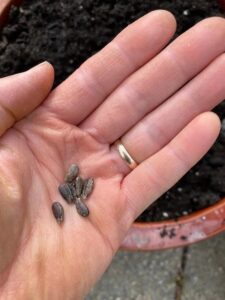
Choose a suitable variety: Select a watermelon variety that suits your climate and growing conditions. Consider factors such as fruit size, taste, and disease resistance.
Prepare the soil: Watermelons prefer well-drained soil with a pH level between 6 and 7. Amend the soil with organic matter like compost or well-rotted manure to improve its fertility and drainage.
Direct sowing: You can directly sow the seeds outdoors after the danger of frost has passed and the soil temperature reaches at least 70°F (21°C). Create mounds or hills spaced 6-8 feet apart and plant the seeds about 1 inch deep.
Water and care for the plants: Watermelons require regular watering to maintain consistent soil moisture. Water deeply, providing around 1 inch of water per week. Avoid overwatering, as it can lead to disease problems. Monitor the plants for pests and diseases, and take appropriate measures if necessary.
Provide support: Depending on the watermelon variety, you may need to provide support to the developing fruit to prevent it from sitting directly on the ground. You can use slings made from fabric or mesh to cradle the fruit and support its weight.
Monitor and harvest: The seeds will germinate within 6-12 days in favorable conditions. As they grow, you may need to prune or remove any suckers or non-fruiting branches to redirect the plant’s energy toward fruit development. Harvest the watermelons when they are fully ripe, as indicated by a creamy yellow underside, a dried tendril near the fruit, and a hollow sound when tapped.
Learn about Papaya Tree Care
Growing Watermelon from Seeds in Pot
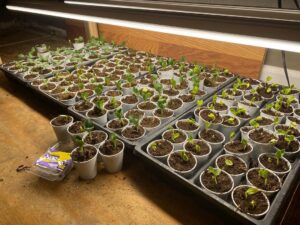
- To grow watermelons from seeds in pots, choose a pot with a minimum diameter of 18 inches and a depth of 12 inches, using lightweight and durable materials with good drainage.
- Fill the pot with quality potting soil and sow the seeds about 1 inch deep, planting 2-3 seeds per pot.
- Place the pot in a sunny location, ensuring the plants receive at least 6-8 hours of sunlight daily.
- Water deeply, but avoid overwatering, and fertilize regularly. Support the vines with stakes or trellises and hand-pollinate if necessary.
Note: Keep in mind that watermelons have taproots and don’t handle transplanting well.
Here are some popular dwarf watermelon varieties suitable for growing in containers:
1. Sugar Baby: A compact variety with small, sweet fruits that are perfect for container gardening.
2. Bush Sugar Baby: A compact bush-type watermelon that produces sweet, juicy fruits and is ideal for limited space.
3. Golden Midget: A small-sized watermelon with a golden rind and sweet flesh, well-suited for container cultivation.
4. Mini Love: A miniature watermelon variety that produces small, seedless fruits, perfect for container gardens.
5. Blacktail Mountain: A compact variety that thrives in cooler climates, offering sweet, flavorful fruits suitable for containers.
6. Tiger Baby: It offers small fruits with juicy and sweet flesh.
7. Little Baby Flower: This compact cultivar produces round, small sweet fruits.
Learn Growing Watermelon in a Pot Vertically
Can You Plant Watermelon Seeds Straight From the Fruit?
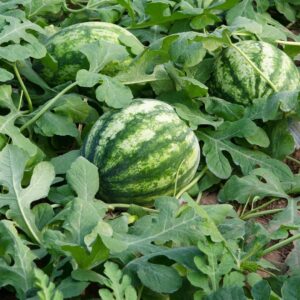
Not all seeds found in watermelon may be viable, so it’s important to perform a seed viability test or plant multiple seeds to increase the chances of successful germination. Some seeds may be underdeveloped or damaged, affecting their ability to sprout and grow into healthy plants.
TIP: Additionally, if you want unique flavors, colors, and shapes, choose heirloom watermelon seeds instead of hybrids, as hybrids may not produce plants identical to the parent plant.
Learn Chilacayote Squash Care
Can You Eat Watermelon Seeds?
Yes, you can eat watermelon seeds! In fact, watermelon seeds are edible and can be enjoyed in various ways. While they may not be as popular as the juicy fruit itself, they can provide some nutritional benefits and be a fun addition to your snack or meal.
- Watermelon seeds offer a surprising crunch and nutty flavor. They are packed with essential nutrients like protein, healthy fats, and minerals such as magnesium, iron, and zinc.
- Eating watermelon seeds in moderation can be a good way to incorporate these nutrients into your diet.
- One simple way is to eat them raw, just as they are. You can munch on them like you would with other seeds or nuts. They can be a tasty and healthy snack on their own.
- Enjoy watermelon seeds by roasting them. Simply spread the seeds on a baking sheet, and sprinkle a bit of salt or your favorite seasoning if desired. Roast them in the oven until they turn golden brown. Let them cool before consuming.
- Watermelon seeds can also be used in cooking and baking. They can be ground into a fine powder and used as a nutritious addition to smoothies, granola bars, or even as a topping for salads or yogurt.


